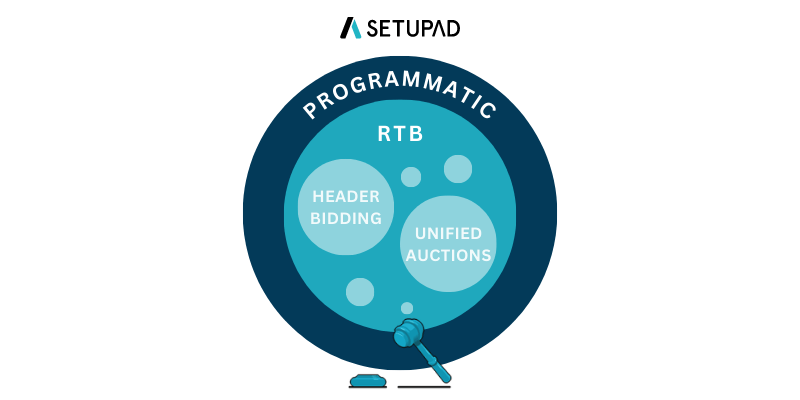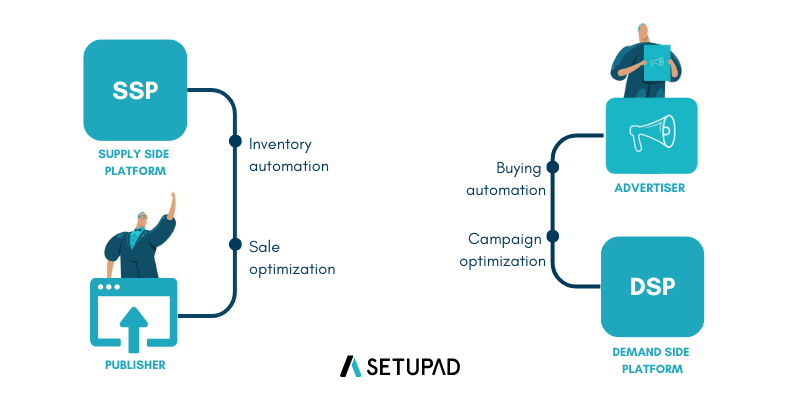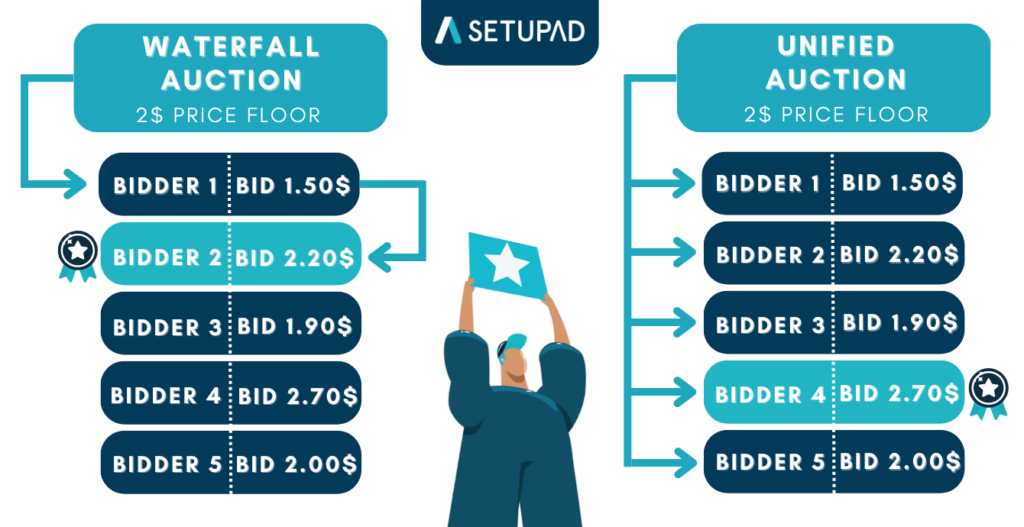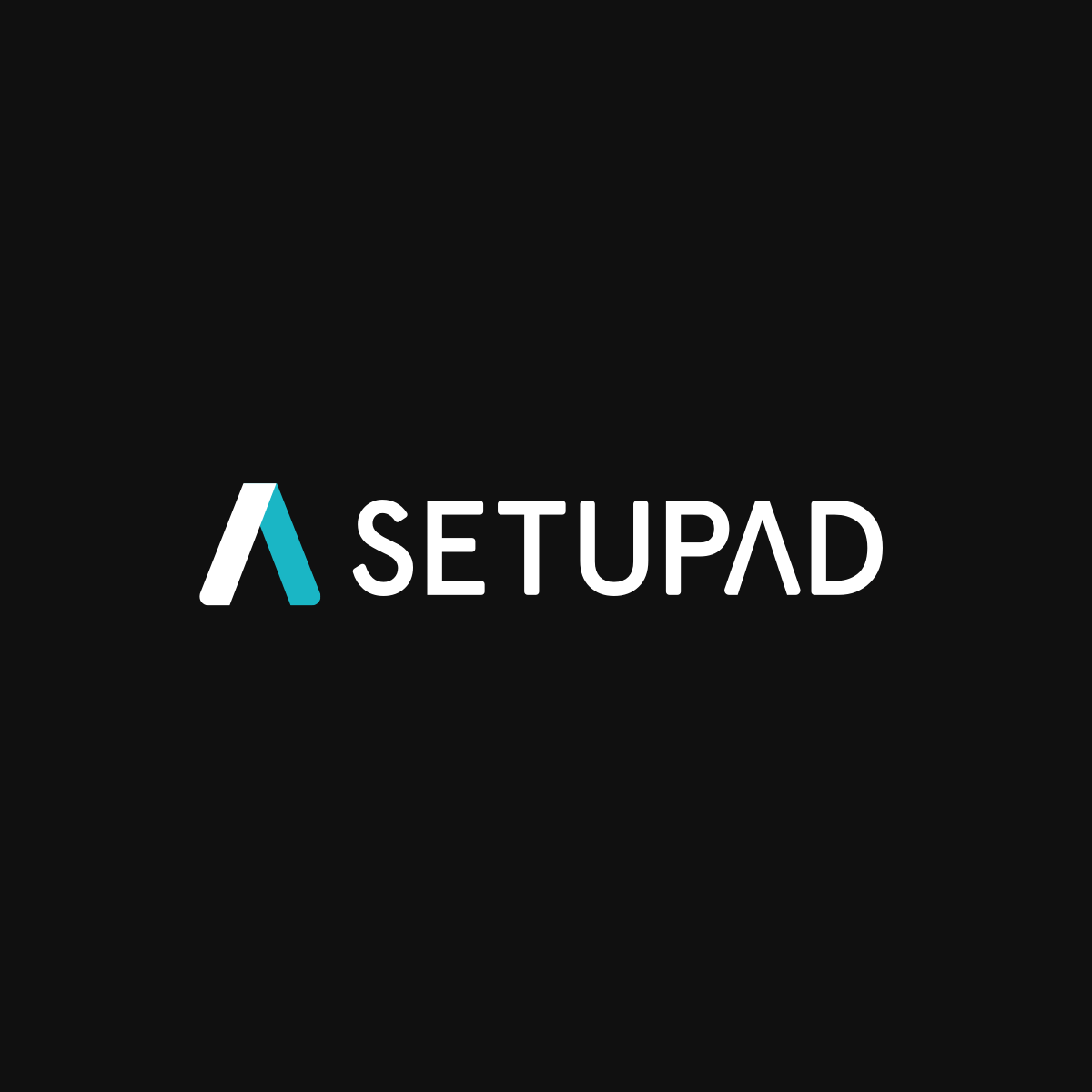Guía de subastas unificadas para editores
Unified auctions enable publishers to sell their ad inventory to multiple buyers simultaneously in a single auction. All buyers are treated equally, and typically the highest bid wins. Unified auctions are one of the key technologies in the programmatic ecosystem, and they sound very similar to an already well-known solution–header bidding.
But how do unified auctions differ from header bidding?
In this article, we’ll cover what unified auctions are, how they’re different from other programmatic advertising techniques, and what are their main benefits and challenges for publishers.
What is a Unified Auction?
Unified auction is a programmatic technique that allows multiple demand sources (e.g., SSPs, DSPs, or ad exchanges) to compete simultaneously for the same ad slot in a single auction.
In contrast, header bidding chooses a bid before sending it to the header bidding wrapper from various auctions, meaning that multiple auctions can take place simultaneously.
Unified Auction vs Header Bidding
Header bidding paved the way for unified auctions.
In header bidding publishers offer ad inventory to multiple ad exchanges simultaneously before making calls to their ad servers.
- A publisher adds a piece of code into the header of their webpage (browser) through a wrapper tag, which enables it to send ad calls to multiple demand partners simultaneously.
Unified auctions, on the other hand, involve the consolidation of all demand sources, including direct deals and programmatic demand, into a single auction. In this method, all buyers bid on the inventory at the same time, regardless of the source.
This results in a more efficient and streamlined auction process that can maximize revenue for publishers.
The main difference between header bidding and unified auctions is the number of auctions that take place. Header bidding involves multiple auctions, whereas unified auctions involve only one auction.
However, header bidding has some drawbacks, such as page latency–the page can take longer to load. The longer the load time, the less likely a user is to wait which can result in missed revenue opportunities.
Alternatively, unified auctions take place in the publisher’s ad server, reducing latency and making it easier for direct deals to compete with programmatic ones.
Real-time bidding (RTB) vs header bidding
Header bidding is a subset of real-time bidding (but not the only one), and real-time bidding itself is a subset of programmatic advertising.
Real-time bidding is a mechanism for buying and selling ads on a per-impression basis in an instant auction. It’s typically facilitated by an SSP or an ad exchange.

How Unified Auctions Work?
In a unified auction, each demand partner has the ability to bid at the same time in a single auction. Because all parties are bidding at once, this approach significantly drives up competition and maximizes your CPMs and revenue.
Other solutions, like waterfall auctions, give certain demand partners a “first look” at the impressions before they decide to buy them. This means that publishers won’t always receive the highest possible price for their ad space.
Advantages of Using Unified Auctions
Here are 4 advantages of unified auctions:
- Improved efficiency. Unified auctions only require one ad call, lowering latency, increasing fill rates, and increasing yield by creating more competition for each impression.
- Maximized ad revenue. Publishers can send bid requests to multiple demand partners, increasing the competition for the inventory. The algorithm ensures that the highest bidder wins the auction. Therefore, greater reach and competition can lead to higher bids and more revenue.
- Greater and more relevant demand. The unified auction enables publishers to access multiple demand sources (e.g., DSPs, advertisers, and ad networks). With better CPM rates, more demand sources unlock more relevant ads for publisher websites, ensuring a better user experience.
- Transparent auction. Publishers can see auction-level data (e.g., incoming and winning bids). With granular reporting, publishers can filter reports by CPM, impression rates, and other metrics to determine the value of their inventory.
Additionally, advertisers also get an equal chance to participate in the auction without having to share their bid price with ad networks and exchanges.
Challenges of Unified Auctions
Regardless of all the benefits unified auctions can bring, there are some challenges.
Here are the 3 main challenges of unified auctions:
- Complexity. Implementing unified auctions can be technically complex, requiring significant development resources and expertise. This can be a barrier for smaller publishers or those with limited technical resources.
- Ad fraud. Unified auctions can increase the risk of ad fraud and lower ad viewability rates, since publishers may not have full visibility into where their ads are appearing and how they’re being served
- Bidder competition. With multiple bidders participating in the auction, it can be challenging to manage the competition and ensure that the highest bidder wins without overpaying.
Implementing Unified Auctions
To implement a unified auction, you need take into consideration these 6 general steps:
- Evaluate your inventory to determine which ad units and placements are the most valuable and in-demand. This will help you optimize your inventory and set appropriate pricing.
- Choose a unified auction solution depending on your needs and budget. For example, Google Ad Manager.
- Set up your ad server to integrate with the solution. This involves creating ad tags, configuring the ad server, and creating ad placements.
- Configure the auction rules for your unified auction. This involves setting up price floors, priority levels, and bidder access controls.
- Integrate with demand partners such as SSPs and DSPs. This involves setting up bidder accounts and configuring bid parameters.
- Test and optimize to ensure that the auction is working correctly and generating the desired results. This involves monitoring key metrics such as eCPM, fill rate, ad viewability rate, and CTR and making adjustments as needed.
Technical requirements for implementing unified auctions
Implementing a unified auction requires a few technical requirements to ensure the smooth functioning of the platform, such as:
- Ad server integration.
You’ll need to integrate your ad server with the unified auction platform to receive ad requests and send responses to winning bidders.
- Bidder integration.
You’ll need to integrate your bidders with the unified auction platform to receive bid requests and send bid responses.
- Real-time bidding (RTB) protocol support.
The unified auction platform must support RTB protocols for real-time bidding and data exchange between demand partners.
- Data management and targeting.
The platform should also provide data management capabilities (e.g., audience targeting) to help improve ad relevance and performance.
- Reporting and analytics.
The unified auction platform should provide comprehensive reporting and analytics capabilities to help publishers and buyers analyze auction performance and optimize their bidding strategies.
- Security and fraud prevention.
The platform should also have effective security measures in place to prevent ad fraud and protect against malicious activity.
- API and SDK support.
The platform should provide API and SDK support for easy integration with other ad tech solutions and to enable custom development.
Integration with DSPs and SSPs
Integration with DSPs and SSPs is a critical component of a unified auction. DSPs and SSPs are technology platforms that enable programmatic ad buying and selling.

Whether you’re a small publisher looking to increase revenue or a large publisher with complex advertising needs, integrating SSPs and DSPs into your unified auction can help you stay competitive and generate more revenue from your ad inventory.
A successful integration with DSPs and SSPs requires careful planning, technical expertise, and ongoing optimization.
The unified auction platform should support the needs of both sides (SSPs and DSPs) to maximize competition and revenue for publishers, such as the bid request and response format, the RTB protocol, the ad formats and channels, etc.
It’s important to remember that the integration process may vary depending on the specific solutions you choose, so it’s important to go through the documentation and support resources provided by each vendor.
Tips for unified auction implementation:
Additionally, here are 8 tips to consider when implementing a unified auction:
- Ensure that your auction platform supports all ad formats and channels that you plan to offer in the auction.
- Be sure to integrate a diverse set of demand sources to maximize competition and revenue.
- Set clear auction rules and guidelines for buyers and sellers to ensure a fair and transparent auction process.
- Continuously monitor and optimize your auction settings to improve performance and maximize revenue.
- Select the right demand partners to ensure they are reliable, have a good track record, and can deliver the desired results.
- Gestiona tus socios de demanda
- Monitor the performance of your unified auctions regularly to identify issues and make improvements.
- Optimize your unified auctions to provide a good user experience, which includes reducing latency and minimizing ad clutter.
Unified Auction Key Metrics Explained
Unified auction key metrics help publishers and advertisers to measure the performance of their ad campaigns and optimize their strategies to maximize revenue and engagement.
By monitoring eCPM, fill rate, viewability rate, CTR, and ad quality score, publishers and advertisers can make further decisions about their bidding strategies and improve the performance of their campaigns.
Here are some of the key metrics used in unified auctions explained:
eCPM (effective cost per mille)
eCPM is a measure of the revenue generated by 1000 impressions. It’s calculated by dividing the total ad revenue earned by the total number of impressions, then multiplying the result by 1000.
(total ad revenue / total impressions x 1000)
eCPM helps publishers and advertisers evaluate the effectiveness of their campaigns and compare different campaigns to each other.
Fill rate
Fill rate is the percentage of ad requests that are successfully filled with ads. It’s calculated by dividing the number of ad impressions served by the number of ad requests made.
(total number of ad impressions / total number of ad requests)
A high fill rate indicates that demand is strong for a publisher’s inventory, while a low fill rate may indicate that the inventory is less desirable or that the campaign is not optimized.
Ad viewability rate
Ad viewability rate is the percentage of ad impressions that are viewed by users. It’s calculated by dividing the number of viewed impressions by the total number of impressions.
(viewed impressions / total number of impressions x 100)
Ad viewability rate helps advertisers and publishers understand how visible their ads are and optimize their campaigns accordingly.
CTR (click-through rate)
CTR is the percentage of users who click on an ad after seeing it. It’s calculated by dividing the number of clicks by the number of impressions.
(total number of clicks / total number of impressions)
CTR helps advertisers and publishers measure the effectiveness of their ad creatives and optimize their campaigns to improve engagement.
Ad quality score
Ad quality score is a measure of how well an ad meets the needs of the user and the publisher. It’s calculated based on factors such as relevance, performance, and user experience.
Ad quality score helps publishers and advertisers ensure that their ads are high-quality and meet the needs of their target audience.
Unified Auctions vs. Waterfall Auctions
What are waterfall auctions?
Waterfall auction, also known as daisy-chaining or waterfall tags, is a technique for publishers to sell remnant ad inventory. The whole process is sequential.
The SSPs and ad networks are ranked based on the average historic performance they have produced for the publisher.
In this process SSPs/ad networks with the best record of eCPM, fill rate, latency, etc. will be at the top. The impressions are then passed from one SSP/ad network to another in sequence until they’re sold.
While the waterfall method works, it’s an inefficient way to conduct programmatic auctions. It can also significantly limit publisher revenue as price floors decrease each time ad units are offered to different demand sources.
Advantages and disadvantages of waterfall auctions
Here are 4 advantages of waterfall auctions:
- Publishers can sell off their remnant ad inventory.
- The waterfall solution has an easy set-up as it only requires pasting passback tags from one SSP (or ad network) to another.
- Uses a standard ad tag, which is ideal for in-app advertising.
- There is often less competition for first-time advertisers.
Here are 4 disadvantages of waterfall auctions:
- Publishers receive a low yield because SSPs/ad networks bid on impressions in sequence instead of real-time bidding (RTB), where they bid simultaneously.
- Once the impressions are passed onto the next SSP/ad network (known as “passback”), CPM price floors decrease, preventing high-paying advertisers from bidding more and, ultimately, decreasing publishers’ revenue.
- Since the process is long, it results in high page latency.
- The sequential selling process results in high impression discrepancy, as opposed to where there is a single auction like in the header bidding.
Comparison between unified auctions and waterfall auctions
In a waterfall auction the publisher offers their inventory to one ad network at a time.
The networks at the top of the waterfall are given priority, which enables them to view the minimum price floor set and choose which impressions they want to buy even if another demand partner was willing to pay a higher price.
If they pass, the choice is given to the next partner in line. It’s called a «passback.»
Due to the fact that each network requires a seperate ad call, passback can cause latency which can lower the fill rate and decrease your overall revenue.

Unified Auctions vs. Private Auctions
What are private auctions?
Private auctions restrict participation to selected advertisers only. This private deal gives an exclusive group of advertisers priority to bid on the inventory before it becomes available in the open marketplace.
In some cases, publishers may allow specific advertisers to apply for an invitation to participate in their auction, and the publisher will decide their approval.
Publishers or ad exchanges can set a minimum CPM, and the highest bidder will win the impressions.
Advantages and disadvantages of private auctions?
Here are 5 advantages of private auctions:
- Safety. It’s safer to share data in private auctions because publishers and advertisers can identify each other at the point of sale.
- Control. Publishers only invite certain advertisers, which allows having more control over pricing and the ads displayed.
- Transparency. Publishers and advertisers are in a direct deal on pre-negotiated terms, which eliminates the risk of ad fraud.
- Higher CPMs. Private auctions tend to have higher CPMs since they are only available to a limited number of pre-selected advertisers who are often willing to pay more for access to premium inventory.
- Data insights. Private auctions can provide valuable data insights to publishers and buyers, such as bid-level data and performance metrics, which can help inform future bidding strategies
Here are 5 disadvantages of private auctions:
- Limited reach. Private auctions are only available to a limited number of pre-selected buyers, which can limit the number of bids and reduce competition, resulting in lower revenue for publishers.
- Time-consuming. Setting up and managing private auctions can be time-consuming for publishers, as they need to select and invite specific buyers, set pricing and auction rules, and manage bidder relationships.
- Limited access to inventory. For buyers, private auctions may limit access to a publisher’s full inventory, which can limit the scale and reach of their campaigns.
- Not for everyone. Small publishers (<100k monthly traffic) might not have premium inventory that advertisers are willing to buy.
- High fees. The costs of running a private auction and commission fees can be high. Some SSPs may retain up to 25% of ad spend.
Comparison between unified auctions and private auctions
Unified auctions and private auctions are two different methods of conducting programmatic advertising auctions, with key differences in terms of the auction process and the buyers involved.
Unified auctions involve the consolidation of all demand sources, including programmatic and direct deals, into a single auction. All buyers bid on the inventory simultaneously, regardless of the source.
This results in a more efficient and streamlined auction process that can maximize revenue for publishers.
Private auctions are programmatic auctions that involve a limited number of pre-selected buyers who are invited to bid on specific inventory. Private auctions are usually conducted through programmatic direct deals or preferred deals.
In this method, the publisher controls who has access to the inventory, and the invited buyers bid on the inventory in a separate, exclusive auction.
Here are some key differences between unified and private auctions:
| Unified auctions | Private auctions | |
| Amount of buyers | All buyers | Limited number of pre-selected buyers |
| Auction type | A single, comprehensive auction | Typically separate and exclusive auctions |
| Inventory | Access to all available inventory | Restricted access to specific inventory |
| Rules | Standardized auction rules | Publishers can set their own auction rules and invite-only the buyers who meet their criteria |
| Transparency | More transparent since all buyers bid on the same inventory at the same time | Less transparent since only pre-selected buyers have access to the inventory |
Conclusion
Unified auctions are playing an increasingly important role in the programmatic advertising ecosystem, offering publishers a powerful opportunity to maximize their ad revenue and increase competition for their ad inventory.
While there are some challenges associated with implementing unified auctions, including technical complexity and bidder competition, the benefits of this approach can outweigh them.
Publishers can maximize the revenue potential of unified auctions and maintain their competitiveness with careful planning and by choosing the proper technology solutions and partners.
Setupad provides publishers with a simple-to-use header bidding solution that doesn’t involve complex technical knowledge. Our hybrid header bidding wrapper connects publishers to 30 premium SSPs and combines bids from the client-side with server-side connections, ensuring that the revenue and website’s loading speed aren’t compromised.
Additionally, we provide an extensive reporting interface and consistently help our publishers to improve their ad inventory so buyers would be more willing to compete for it.
If you’d like to test our solution, sign up or contact us at [email protected].
FAQs
What is the difference between a unified auction and header bidding?
The main difference between header bidding and unified auctions is the number of auctions that take place–header bidding involves multiple auctions, whereas unified auctions involve only one auction.
How do unified auctions benefit advertisers?
In a unified auction all demand partners participate in the real-time auction at the same time in a fair way, and the highest bidder wins. Therefore, advertisers get an equal opportunity to bid for the ad impressions.
What are some of the challenges associated with unified auctions?
The main challenges of unified auctions are associated with technical complexity and bidder competition, but the benefits of this approach can outweigh them.
What metrics should I be monitoring in a unified auction?
In a unified auction some of the most important metrics include eCPM, fill rate, viewability rate, CTR, and ad quality score.
How do I set up a unified auction for my website?
The easiest way to set up a unified auction for your website would be to find a partner or solution that best fits your needs. For example, Google Ad Manager.
Are there any alternatives to unified auctions?
One of the alternatives for unified auctions is header bidding. The whole process is very similar, but the main difference is the amount of auctions that occur.
How do unified auctions compare to waterfall auctions?
In a waterfall auction the publisher offers their inventory to one ad network at a time, therefore it can cause latency which can lower the fill rate and decrease your overall revenue if compared to unified auctions.
How do unified auctions compare to private auctions?
Unified auctions and private auctions are two different methods of conducting programmatic advertising auctions, with key differences in terms of the auction process and the buyers involved.


